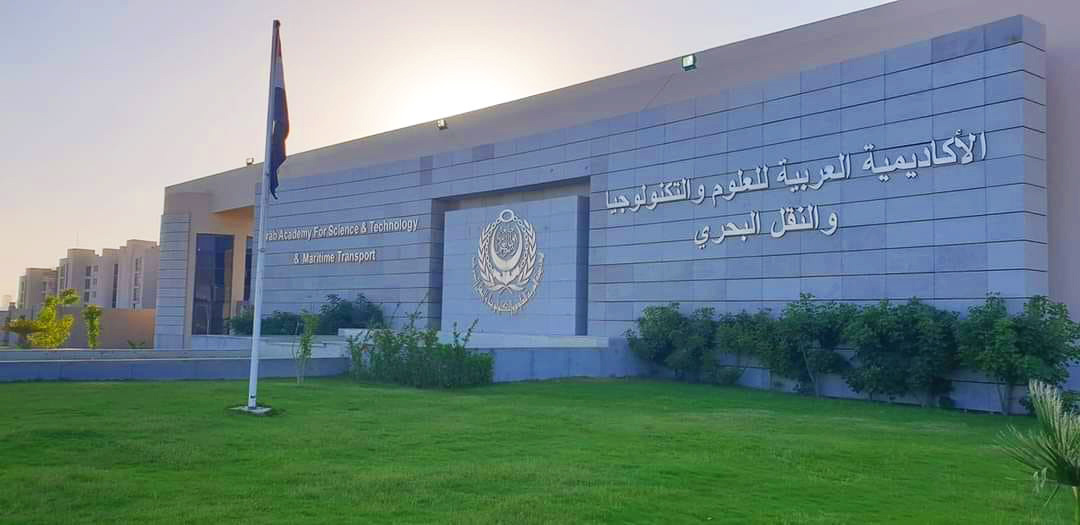
Untitled Document
The College of Medicine at the Arab Academy for Science and Technology and Maritime Transport is located in the newly established Alamein branch. El Alamein is a town in the northern Matrouh Governorate of Egypt. Located on the Mediterranean Sea, it lies 106 kilometers west of Alexandria and 240 kilometers northwest of Cairo.
New Alamein was conceived by the Egyptian government as a center for tourism, education, and government. Construction is ongoing at New Alamein for three universities, fifteen skyscrapers and high-rise towers, and 10,000 hotel rooms. Work has begun on Phase II of the New Alamein megaproject, which includes ten additional coastal towers.
The Egyptian government intends for New Alamein to bring large numbers of tourists to the Mediterranean beaches of the northwest coast. The government asserts that approximately 30 developers have been granted permits to move forward with the construction of hotels for 30,000 rooms. Many of these units are in high-rise buildings along the beach, with towers already under construction including The North Edge Towers and The Gate projects. Other centers of activity in New Alamein will include three universities and a "city of culture and arts" to encompass a Roman Theater, studio complexes, an opera hall, and a cinema complex.
Unlike the resorts on the northwest coast, which have private beaches sealed from public access, New Alamein is conceived as being an open city permitting entry to the general public.
 |
 |
 |
History
The city''s history dates back to the Roman era, when the city of Leucaspis, an ancient Roman coastal city, was located on its land, with a population of 15,000 people at the time. The city center features a Roman cathedral and a large hall that has been converted into a church. In the past, the village represented a commercial center between Egypt and Libya and the imports of the Cretan. The ancient settlement was destroyed in 365 by a tsunami wave caused by an earthquake that occurred off the coast of Crete. The town was not rebuilt, due to the state of turmoil in which the Roman Empire was at the time. All trace of Leucaspis was lost until 1986 when a group of engineers who were working on building roads in Marina El Alamein uncovered old houses and tombs. The surrounding 200 acres of land have been designated an archaeological area, and archaeological excavations began in the 1990s.
The first battle of El Alamein
The First Battle of El Alamein or Battle of Alam Halfa is one of the battles of World War II, which took place in the city of El Alamein between the Allied countries, represented by the British under the command of Montgomery and the Axis Powers represented by the Afrika Korps made up of the forces of Germans and Italians under the command of Rommel during the period from 31 August to 7 September 1942. The battle ended with the victory of the British Eighth Army under the command of Montgomery and the withdrawal of the forces of Afrika Korps, which suffered from scarce supplies and continued British bombardment by air and artillery fire, leading to its failure to reach the Suez Canal in what was known as the Six-Day Race.
The second battle of El Alamein
The Battle of El Alamein or the Second Battle of El Alamein is the battle that took place from 23 October to 4 November 1942 during the events of World War II on the land of the city of El Alamein between The British Eighth Army was commanded by Montgomery and the Afrika Korps was commanded by Erwin Rommel. The battle ended with the victory of the British as a result of their superiority in terms of numbers and equipment, as the British forces amassed more than a thousand tanks, which was twice the number of German tanks and 450 cannons, in addition to the air superiority of British bombers, while the German forces lacked adequate air cover and suffered from the age of their artillery model in addition to poor supplies.
El Alamein Fountain
The El Alamein Fountain is a monument erected in Sydney, Australia, in memory of the soldiers who died in 1942 during the battles of World War II in the Egyptian town of El Alamein. It was designed by Australian architect Phil Taranto.
Tourism
El Alamein war museum
El Alamein has a war museum with artifacts from North African battles.
Military cemeteries
Germany
Visitors can also see the Italian and German military cemeteries on Tel el-Eisa Hill outside the town. The German cemetery is an ossuary, built in the style of a medieval fortress.
Italy
The Italian cemetery is a mausoleum containing 5,200 tombs. Many tombs bear the soldier''s name with others simply marked IGNOTO, i.e. unknown.
Greek
There is a separate Greek cemetery at El Alamein.
Commonwealth of Nations
There is also a Commonwealth war cemetery, built and maintained by the Commonwealth War Graves Commission, with graves of soldiers from various countries who fought on the Allied side. Buried here are 6,425 identified Commonwealth service personnel, 815 unidentified ones, and 102 of other nationalities These include four Victoria Cross recipients:
- Private Percival Gratwick, Australian Imperial Force
- Private Arthur Stan Gurney, Australian Imperial Force
- Sergeant William Bill Kibby, Australian Imperial Force
- Private Adam Wakenshaw, Durham Light Infantry
Others buried here include
- Squadron Leader George Barclay, RAF Battle of Britain fighter pilot
- Major Henry Rew, Royal Tank Regiment
This has monuments commemorating Greek, New Zealand, Australian, South African, Indian and Canadian forces. The cemetery entrance is through the Alamein Memorial and there is also a separate Alamein Cremation Memorial to 603 Commonwealth service personnel who died in Egypt and Libya and were cremated in line with their religion.